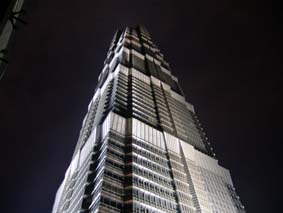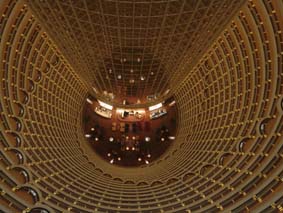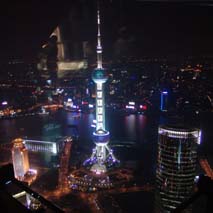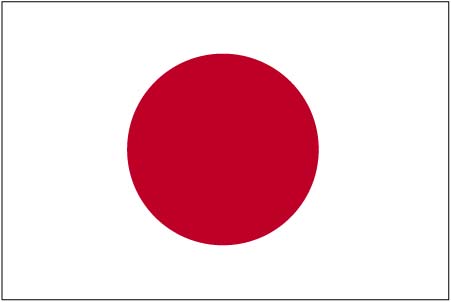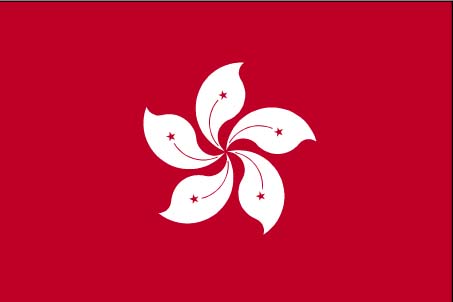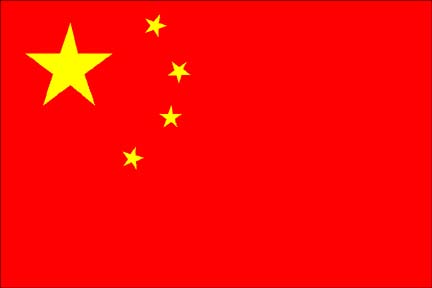

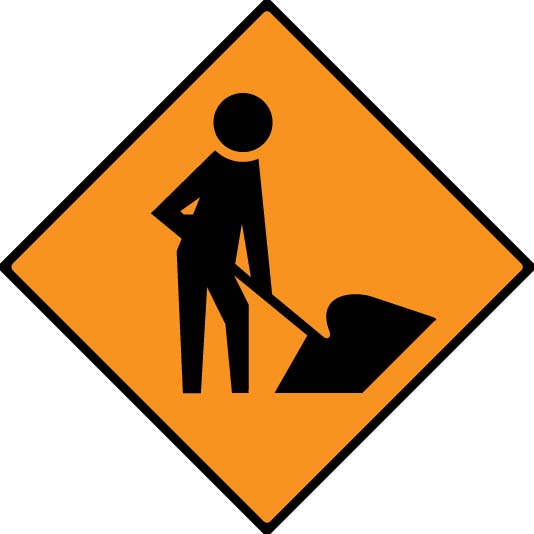 |
THIS PAGE IS STILL UNDER CONSTRUCTION!
KEEP CHECKING FOR NEW PHOTOS |
|||
If you would like me to add your China photo or comments or want info email me at:
blake@note-music.co.uk
Any photos you would like me to add?
Words by Pat Hawkins
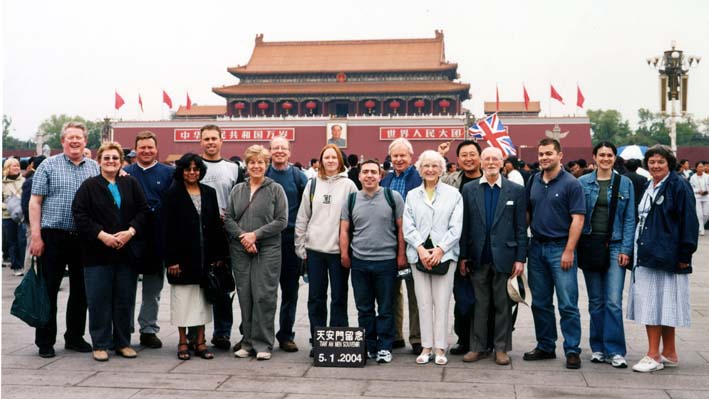
Friday, 30 April
Up early to catch the 7 a.m. train out to Osaka Kansai airport. This would be the last time Judy and I would have to struggle with our cases up and down the escalators. Our 10 a.m. flight to Beijing left on time (as we had come to expect in Japan!) and arrived 5 minutes early. We were through temperature check, health, passport control and customs and had collected our bags within 20 minutes! All very efficient. We were amazed at how modern Beijing airport was. The London flight was about 45 minutes behind ours, so we had time to sample the coffee and cakes on offer in the airport café, before meeting up with our fellow travellers on the Kuoni tour.
On the coach journey to the Grand View Garden Hotel we were surprised at the modern architecture and attractive buildings and well-kept roadside planting. Passed many homes about to be demolished to make way for new apartment blocks.
Found the internet café for our first e-mail message from China. A dingy room on the third floor of a building which also housed a café and which seemed to be full of youngsters playing noisy video games. Struggled a bit with the internet instructions and were amused by the dried up grain of rice on the mousemat!
Went with Dianne (our tour leader) to climb up Cole Hill, overlooking the Forbidden City, which looked huge, for views (and photo opportunity) of the sunset over Beijing. Then on to Tiananmen Square which was teeming with activity. Everything from postcards and T-shirts to Chairman Mao watches could be bought from eager sellers all prepared to bargain. Tiananmen Square covers a vast area and is surrounded by beautiful buildings – The Great Hall of the People, Museum of Chinese History and the Chairman Mao Memorial Hall, all wonderfully illuminated at night. It was magic!
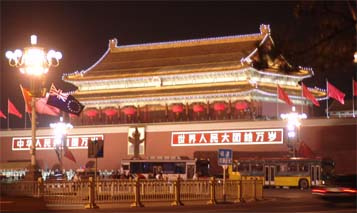
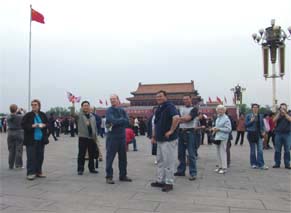
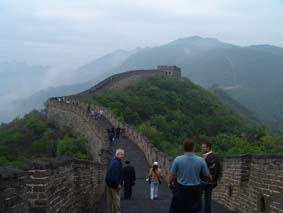
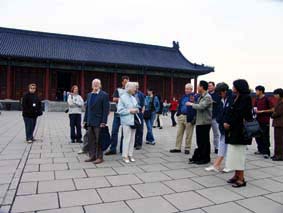
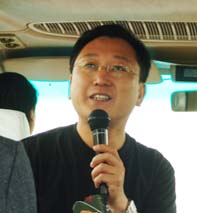
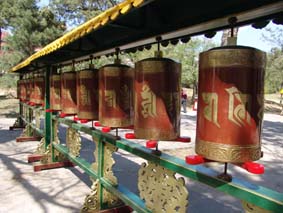
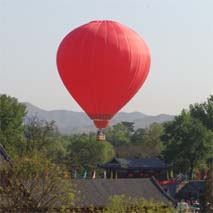
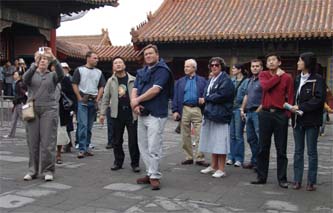
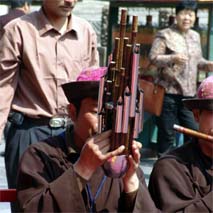
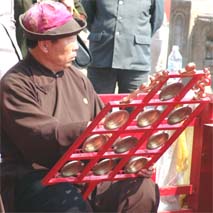
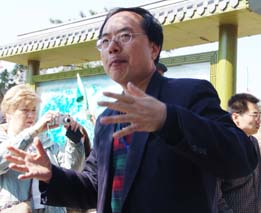
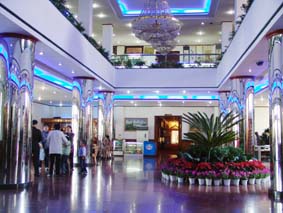
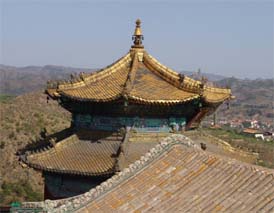
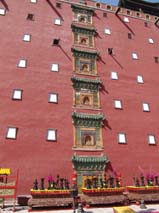
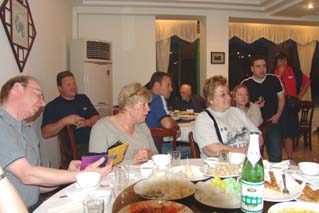
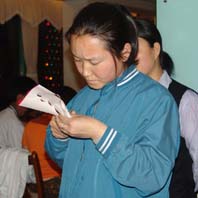
The start of the Chinese holiday and traffic in Beijing was extremely busy – cars, buses and bicycles. Dianne told us that at night the bicycles do not have lights. Visited the Temple of Heaven. This temple was a place for the Ming and Qing Dynasties Emperors to worship heaven to pray for good harvests. It opened to the public as a garden in 1918 after the Revolution. We saw people exercising their bodies and minds for health and fun – dancing the tango and slow jive, hack-a-sack ball games, a type of tennis, tai chi, body stretching, cards, dominos and singing. Some of the men playing cards and dominos had with them their songbirds in cages so that they too could enjoy the morning air. The Temple itself was a beautiful round shaped structure painted in blue, green and gold, reached by a flight of carved stone steps.
Drove on through very heavy traffic to the Summer Palace. Walked through the gardens laid out round small waterways. (All Chinese gardens have rock and water). Lots of Chinese tourists on their holidays. We were stared at often – Dianne explained that many Chinese would be up from the country on their only visit to the Beijing and had never seen westerners before! Walked by the covered walkway, intricately decorated with birds, butterflies and flowers, to reach the Marble Boat. After an ice cream, we took a short trip on a dragon boat on the Kunming Lake, which was busy with pedalos, and enjoyed good views of the Tower of Buddha Incense and the Seventeen Arch Bridge.
After lunch, we visited the Forbidden City (now called the Palace Museum). We spent over 2 hours there and saw only 1/8th of the whole city. It is the largest Palace complex in the world and was the seat of imperial power during the Ming and Qing dynasties. The highlight of the City was the Emperor’s audience hall, which featured in the film ‘The Last Emperor’. We were not able to go inside but could climb up the marble steps which had dragons carved on the slopes between the steps, and had good views over much of the Forbidden City.
We walked through to Tiananmen Square for our group photo. We were 14 on the tour plus Dianne and Richard, our guide in Beijing. As the photographer set up his tripod, we were surrounded by at least 100 Chinese onlookers – felt like celebrities!
After dinner, we were taken to the Liyuan Theatre for a performance by the Peking Opera. We had a few minutes to watch some of the artists putting on their make-up. The opera was mainly mime with acrobatic dancing and movement and hardly any singing – all done in elaborate and colourful costumes. Surprisingly enjoyable.
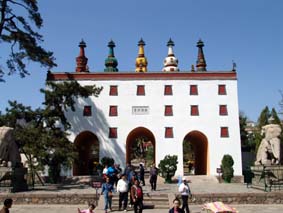
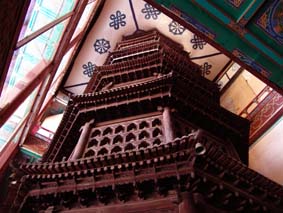
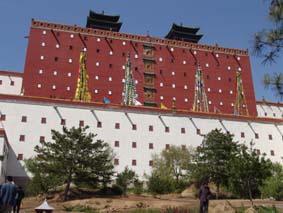
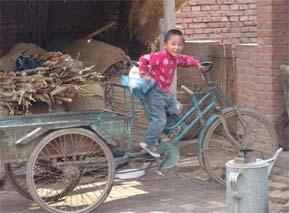
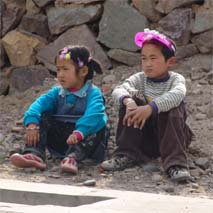
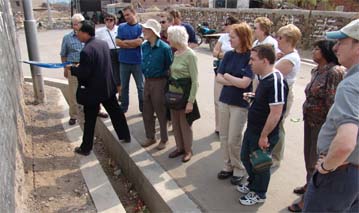
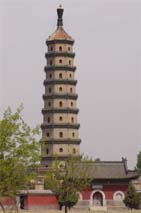
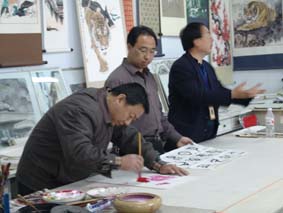

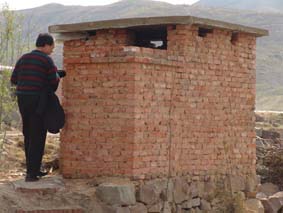
Awoke to light rain. Drove out of Beijing heading for the Mutianyu section of the Great Wall. The landscape became more rural ñ we could see apricots growing on the side of hills and workers in the fields using hand held ploughs drawn by horses or asses. When we reached the Great Wall it had stopped raining but was very misty ñ which added to the atmosphere but spoilt any chance of seeing the Wall panning out into the distant mountains. The road approaching the cable car up to the entry point was packed with market stalls selling everything from T-shirts, postcards, dried fruit and nuts, walking jackets, fleeces and boots to various trinkets and souvenirs. We managed to avoid the sellers clutches and proceeded to the cable car. The ride was very steep. We entered the Wall through quite a small gap. Amazed at the width of the Wall ñ like a small road ñ and the sheer drop down either side. Walked for about 45 minutes in one direction. The Wall undulated following the contours of the hills, sometimes steeply sloping other times steps took us onto the next section ñ it was very steep in parts. There were more steps to climb to enter the watchtowers which were placed at intervals of every 100 yards or so; which gave good views as the mist came and went. Maria and Ryan walked as far as they could to the break in the Wall; the rest of us turned to retrace our steps back to the entry point. Most of us succumbed to the entreaties of the sellers as we returned to the coach ñ Blake was thrilled with his Chairman Mao T-shirt even though he reportedly paid through the nose for it!
After lunch we stopped at the Cloisonne factory to watch how these delicate items were made. This method of making vases, bowls and plates goes back to the Ming dynasty. The technique involves beating copper into the required shape, gluing on copper wire to form patterns, filling these patterns with enamel colouring and then firing and polishing. Traditionally blue enamel was the predominant colour but now items are produced in every colour. Items for sale were displayed in a very modern showroom ñ a stark contrast to the workrooms where we saw the Cloisonne being made.
On the way up the mountains to the Ming Tombs we passed through more agricultural areas. We saw chestnut, walnut, apple and peach trees and workers in the fields using hoes and spades to cultivate and weed and more horses and ploughs. We also noticed vineyards on hill slopes. Gingko trees, which have pretty fan shaped leaves, were evident both in the countryside and in Beijing. Disappointed not to be able to go into the Tombs, but the layout of the gardens and gateways was impressive. Some of the treasures from the Tombs were to be found in the museum. The Empressís headdress was spectacular. A large statue of Zhudi (1360-1424), son of Emperor Zhu Yuanzhang, founder of the Ming dynasty, sat in the middle of the museum.
This evening dinner was at the famous Qianmen Quanjude Roast Duck Restaurant for Peking duck. Pictures outside and in the foyer of the restaurant showed various famous diners ñ George Bush, Fidel Castro, Yassir Arafat, Helmut Kohl and our own Ted Heath. The restaurant provided dinner for the Olympic Games International Inspection Teams when they inspected Beijingís bid. Perhaps the delicious dinner helped to persuade them to award Beijing the Olympics for 2008! Our ducks were carved at our tables with great aplomb by the chefs. As at home, the duck was served rolled up in pancakes with spring onion and hoisin sauce, but no cucumber. We all thoroughly enjoyed the dining experience - a welcome relief from the already monotonous sweet and sour pork!
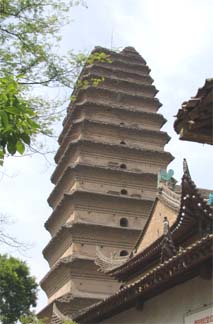

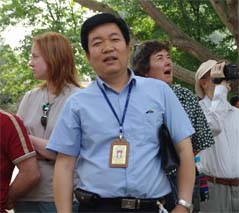
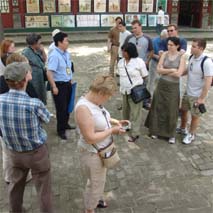
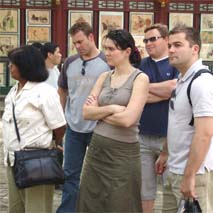

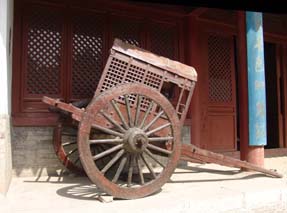
Up at 4.45 a.m.!!! With a small bag packed for 2 nights only, we caught the 7 a.m. train to Chengde. The journey took us north-east of Beijing out into rural China. Again we saw workers in fields, hoeing, ploughing with ass/horse, the occasional tractor but mainly manual workers, men and women, using large spades and wearing large hats to protect them from the sun. Fields were sprayed manually. Shepherds with about a dozen sheep each ushered them along the field or road. Poor quality low-rise housing. We saw more chunks of the Great Wall, also more fruit trees and small plots planted with vegetables. Also saw workers with yokes on their necks carrying pails. Cyclists on bikes pulling trailers full of all sorts of things ñ fruit, vegetables, building materials, packaging materials etc. (This mode of transport also used a lot in Beijing). We passed old looking factories and industrial buildings. The train ticket in the first class carriage cost 61 yuan (£4). Not quite bullet train quality but OK, the train was a bit tatty and tired looking. Piped music. Hostess served Chinese tea or coffee for 5 yuan a cup. Powdered milk for the drinks was dispensed by a spoon from a jar! The two ìhostessesî then brought around a never ending stream of goods for sale - fans, pencils, Xmas tree decorations, pill pots, scarves, postcards, playing cards, books on China. Much haggling on price and great fun. The train climbed up, winding through green tree covered mountains and passing through many tunnels. The land was farmed right up to the tracks in places with workers walking very close to the railway lines.
The train arrived at Chengde at 11.15 a.m. and we were met by our Chinese guide Pi (Peter) and boarded the CITS bus, which was very scruffy, to take us to the Mountain Villa Hotel. Lunch was at the Rose Restaurant (Chinese again). Then on to the Pu Tuo Zong Sheng Temple (also known as the Mini Potala Palace) for the afternoon. This temple was modelled on the Potala Palace in Tibet and was totally different to the temples weíd seen in Beijing ñ it was more open and was built tier upon tier going up and up (more steps) and had wonderful views of the luscious green mountains. We were able to climb right up to the top and admire the golden roof glinting in the sunshine. The weather was now beautiful and sunny with clear blue skies.
Dinner was at the hotel and then we walked out to sample the night-life of Chengde, a small town of 350,000 inhabitants. Just off the main roundabout a small band was playing and people (mainly women) danced on the pavement waving scarves or fans in time to the music. Further on in a big square we came across Chinese line dancing to taped music ñ great fun ñ with about 60+ people taking part. Street sellers peddling their wares and boys playing at flicking, like a ball, a weighted shuttlecock to each other with their feet. Back to the hotel for a nightcap in the Monkey Bar. The tour is now much more relaxed at Chengde, the pace of life for the Chinese is less hurried here and weíve had more time to ourselves and to get to know our fellow travellers.
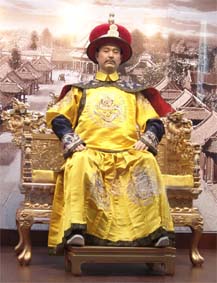
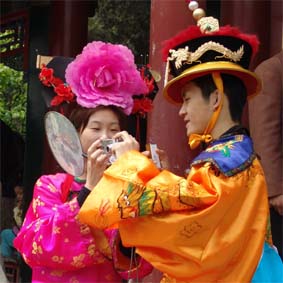
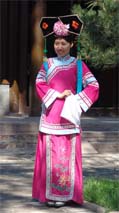
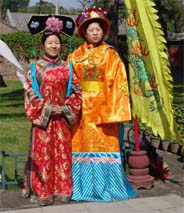
This morning we visited the Summer Mountain Palace Resort. In the Qing Dynasty, the Emperor built the Palace at Chengde to escape the heat of the Beijing summer and spent six months of the year here. Political life carried on at the Mountain Resort along with the hunting of wild animals ñ so much so that the tiger became extinct in this area. Troops were taught to hunt and undertook their military training here. The Palace was built in the midst of a sweet smelling pine forest. In the museum we saw clocks from Belgium, Holland, England etc, all gifts to the Emperor. There were also beautifully made Chinese clocks and wall plaques made of wood, bone, ivory and pearl made by very talented and famous artists. The Palace was built on the same axis as the Forbidden City in Beijing, and was built in symmetry for Feng Shui. In Chinese folklore, cranes are a symbol of longevity and bats of happiness. There were no toilets in the Palace; because they were a nomadic people and used wood or porcelain chamber pots, beautifully decorated. The Empress had one with a gecko (lizard) decorated handle with jewelled eyes. Incense was used to hide the smell and soldiers in charge of hygiene were responsible for the disposal of the contents. In a large room clothed models of Emperors of the Qing Dynasty were displayed. The Last Emperor, Xuan Tong, was depicted as a 3-year old when he became emperor.
We walked through the Palace gardens laid out round a lake on which Chinese holiday-makers were boating. Jugglers and acrobats performed to enthusiastic onlookers; the atmosphere was relaxing and most of us enjoyed an ice cream! Then on to the Calligraphy School where music and dance is also taught. We saw a demonstration of calligraphy and silk painting and were given the opportunity to buy the beautiful silk paintings on display at very reasonable prices.
Lunch was at the Buddhist Guest House Hotel restaurant where we were entertained by some singers as we ate. (Some of us wished we were staying at this hotel ñ maybe the beds would have been more comfortable?). Then on to the Puning Temple which was built in a combined Chinese and Tibetan style. A large incense burner in the courtyard burnt ëmessage incenseí to Buddha. Silk like scarves were tied round railings for good luck. The Temple consisted of a series of temples each reached by more steps than the previous one and rising up into the hills. A group of buddhist musicians were sat in front of one temple and would play a tune for you if you paid 100 yuan (£7). In one temple there were 3 buddhas ñ Past, Present and Future. The largest wooden buddha called Guanyin had 42 arms and 43 eyes was situated in the highest and last temple. Behind this last temple further steps went up to a picnic area and along the steps were thousands of padlocks (keyless) which are placed there after wedding ceremonies to symbolise the couple being together forever.
We drove out to a village to meet a farmer and his wife in their home. Firstly Pi explained the declaration written on a wall at the edge of the village, which listed the birth policy ñ one child only, and the penalties for breaking the policy and the inducements for abortion, vasectomy etc. Thirty Yuan seemed to be the going rate for everything! Apparently the ëone child policyí is relaxed in rural areas because if the child is a daughter she will go with her husbandís family to help with the farm whereas a son will bring his wife to his own family. The lack of freedom and personal choice was quite chilling. The farmer grew sweetcorn about 5 kilometers away. The single story semi detached house consisted of 2 rooms only, the main one had a large raised pallet-type bed with heating (via chimneys) underneath on one side of the room, and a settee, old TV, old fridge and an aspidistra type plant on the other. The second room was a sort of scullery but the lack of utensils and equipment was amazing. Water was from a standpipe in the dusty yard ñ there was also some sort of shed and a fenced garden/play area where their grandson and friend played. Their son lived in the other half of the house. We all felt rather sober after seeing their meagre living conditions.
After dinner 10 of our group including Dianne went for a traditional Chinese foot massage. We were in 2 rooms of 5 reclining chairs in a row. Firstly our feet were soaked in a bowl of warm water containing herbs. Then followed a head and neck massage, reflexology on the feet and legs, arms and back and shoulder massage ñ all fully clothed. Synchronised massage ñ very enjoyable if a little strenuous and all for 120 Yuan (£8.50). Grace fell asleep and snored!
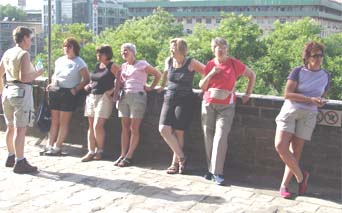
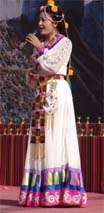
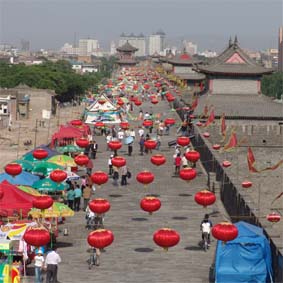
Early start for the 256 km coach journey back to Beijing and our flight to Xian. Just outside Chengde we drove alongside the rubber dammed river. Workers were planting crops on the dried up river bed awaiting the rainfall. Later on we passed through agricultural land with many greenhouses made of mud and brick sides and roofs and Perspex for the side facing the sun. Also cloches in the fields and rows and rows of vegetables. Noticed a few sheep in the hills and green rolling mountains with more rugged ones in the distance. There was a lot of road construction. The comfort break stop for coffee and Chinese squat loo left a lot to be desired on both counts! Later on we stopped to take photos of part of the Great Wall built in the Ming Dynasty. Passed local markets at the roadside selling fruit and vegetables and clothing. Also spotted lots of beehives by the roadside. We were handed out our picnic lunch ñ 2 boiled eggs, an inedible chicken drumstick, a dry roll, a banana and bottle of water. (Our usual Chinese lunch was infinitely preferable!) Nearer Beijing we passed restaurants with tanks filled with fish caught in the nearby reservoir. Baked fish with sweetcorn is a very popular dish. Pi told us that the Chinese day starts early with exercises at dawn, lunch is 11.30 ñ 12.00 and dinner 6/6.30 and exercises after dinner as well. Back in Beijing again we saw many new buildings ready for the 2008 Olympics and lots more construction going on.
Our flight to Xian was efficient and on time and we were reunited with our bags when we landed at another very modern airport. Our Xian guide, Bruce, told us the cityís population was 4 million with a further 3.5 million in the rural areas. Two crops are grown per year ñ winter wheat and then corn and some rice where there is enough water. Annual rainfall is 24/25 inches. Corn is used for alcohol, and starch and a little is used for porridge. We stopped to walk on the Xian city wall which was 12/14 metres wide at the top and 14 kilometres long and built in the Ming Dynasty. Sticky rice porridge and lime was used for the cement. The old bell stood in the Bell Tower ñ this was rung in the morning and the Drum Tower contained the drum struck for evening time. People were cycling along the walls and there were market stalls too. A stage had been set up at the base of the Wall and singers and dancers were performing. Good views of the modern city Xian from the city walls. Bruce told us that most of the new city had been built within the last 10 years and 15 new universities had been built south of the city.
The Garden Hotel at Xian was our home for the next 2 nights and was a welcome contrast to the previous hotel. In spite of having to go through the usual temperature check at the airport, we all had our temperature taken in the ear on arrival at the hotel. The beds were extremely comfortable, breakfast was good, even the orange juice was good, and we were able to get our laundry done very cheaply!
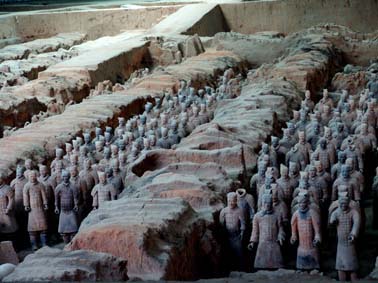
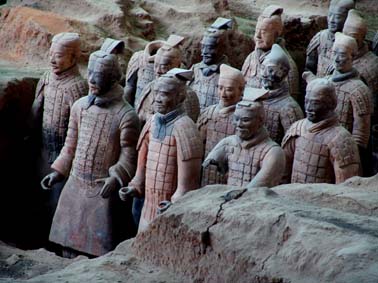
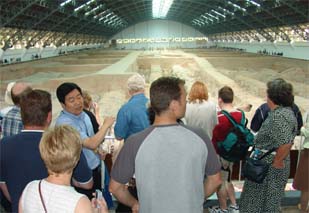
We left early (again) to beat the crowds at the Terracotta Warriors site. We arrived at 8.30 a.m. and commenced in Pit 3 which we had to ourselves. Four farmers had discovered the warriors when they were drilling wells for water in March 1974. The village head reported the news to the local government and the rest is history. Emperor Qin, founder of the Qin Empire, unified China in 221 BC. To ensure the security of his rule he commanded the rebuilding of old defensive walls and thus The Great Wall of China was built. He commenced the building of his mausoleum soon after he became King of Qin. It took 38 years to build and thousands of workers were involved in its construction. It is sited 35 kilometres from Xian at the northern foot of Mount Li. The southern side of Mount Li is famous for gold and the northern side jade and the site chosen by Qin had good FengShui, i.e. for balancing man, nature and spirit (Ying and Yang, negative and positive, female and male, gold and jade). When he died and was buried in the tomb in 210 BC, the entire construction was not completed. The second emperor ordered his fatherís childless concubines to follow the emperor into the tomb as well as many tomb officials and builders who were also buried alive to keep the buildingís secret. The tomb was booby-trapped with crossbows and mercury to deter thieves. Gold, silver, jade, jewellery and ornaments were placed in the tomb. Qin had 24 sons and 10 daughters; the eighteenth son became the next emperor after killing the other sons.
Pit 3 was discovered in June 1976 and is thought to be the Army Headquarters which controlled No 1 and 2 Pits. Pit 2 was discovered in April 1976 and is not yet fully excavated and has a collapsed roof with roof beams visible. Pit 2 has 4 minor military formations ñ crossbow warriors, chariots, cavalry and rectangular chariots. Pit 3 was found in March 1974 when the peasants were drilling a well. There may be more than 6,000 warriors in Pit 3, and 8,000 in the 3 Pits in total.
The warriors were truly amazing. Each Pit was enclosed in attractive hangar like buildings and we were able to walk round the edge of the excavation sites and see the warriors and horses from all sides. Most of the life-size warriors had now lost their painted colouring due to exposure to the air. But what was really remarkable was that so far no two figures unearthed have the same features or expression. The site was laid out beautifully with gardens and a 360 degree surround sound cinema explaining the story of the army.
We drove back towards Xian for a very enjoyable Chinese buffet lunch at the Tang Dynasty Hotel (5* western toilets with an attendant squirting soap on your hand and then handing you a paper towel!!!). Then a quick visit to a jade outlet ñ the jade was beautiful but very expensive. The Chinese value jade as we regard diamonds and it is bought for good health. Nearer Xian we toured the Small Wild Goose Pagoda, built in 707 AD, and which has been severely damaged by 3 earthquakes. It is set in a park with a stage for music and dance, and old farming implements and sedan chairs are on display. A large bell (which looked very similar to the one in Hiroshima) could be struck if you were prepared to pay and make a wish.
Dinner was at a revolving restaurant on the 20th floor where we competed with German tourists for our sushi and salad starters! The food was excellent with different and unusual dishes plus puddings ñ crËme caramel and cakes! Then it was on to the Tang Dynasty Hotel again for a show of traditional Chinese dance and music. It was very colourful, entertaining and enjoyable. Dianne had arranged a special cake, complete with firework candle, for Maria and Ryan who celebrated their third wedding anniversary yesterday.
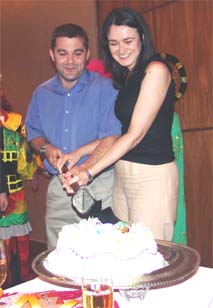
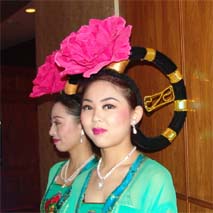

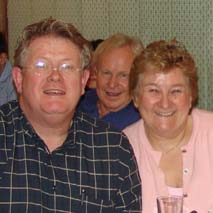
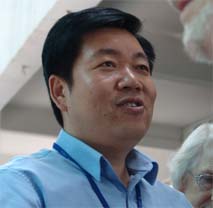
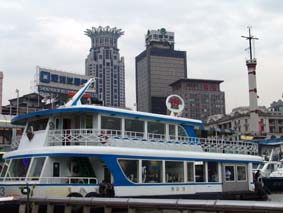
On the way out to Xian airport Bruce told us the trees with the pretty silver bark were sycamore. Also saw Chinese locust trees and lots of tall clover grown at the roadside and in the central reservation. (Clover also featured in the flower beds at the Terracotta Warriors site). Again another very modern and efficient airport at Shanghai. Our guide this time was female and called Lang. She told us that Shanghaiís population was 16.5 million. On the drive to our hotel, the Radisson Langsheng, we were amazed at the exciting skyscrapers ñ commercial buildings and hotels. There were lots of old tenements and flats and much new building going on to replace these. Shanghai is a cultural centre with 58 universities and colleges and a thriving trade centre on the Huangpu river. It was once a fishing village! A subway system is being built. Lang told us an 8 hour day (shift work), 5 over 7 days a week work pattern exists. We left the hotel at 5.30 p.m. for a sunset cruise on the river. We passed many 1920/30ís houses soon to be demolished for high rise apartments. The price of housing has doubled in 3 years. In 1847 the English settled here. The French and Americans also settled in other concessions (states) and the areas were run totally separately from each other with different voltage, taxes etc. The river was extremely busy with container ships, barges, junks, sampans and pleasure craft and we passed many striking buildings; even two buildings on the Bund very similar to the Liver Building and Customs House at Liverpool. We had good views of the Oriental Pearl Tower with its red glass spheres. As the sun set the coloured lights of the waterfront buildings and the skyscrapers beyond looked brilliant. Our coach dropped us off at the Jin Mao Tower where we took the elevator to the 88th floor in 45 seconds to the observatory. Needless to say the views of Shanghai were wonderful. We were also able to see down inside the observation deck to the 5* Grand Hyatt Hotel. On to the Bund Tourist Tunnel where we were taken in a car through a tunnel lit by strobe lighting and futuristic pictures on the walls ñ very different!
Dinner was not included tonight so all 14 of us ate at Tony Romas ñ it was ribs all round and a fleet of taxis back to our hotel!
Saturday 8 May
After a good breakfast with proper orange and grapefruit juice, we visited the Jade Buddha Temple built in 1918. The Jade Buddha is carved from a single piece of solid white jade weighing 1 ton, and is bedecked with pearls, rubies and sapphires all given as gifts to the temple. Original buddhist manuscripts are kept in this very famous and rich temple. There is also a reclining buddha which is very small ñ together with a large copy of this buddha in marble from Singapore. In steady rain we crossed the road from the temple to visit the fake handbag shops and most of us bought at least one Gucci/Fendi/Louis Vuitton/Prada bag!
Next on to a silk factory where we saw how silk is spun from the cocoon and also pulled and stretched out to lengths to make duvets. The duvets were extremely light and warm and good value for money. Patterned silk bed linen was also available for purchase.
The weather deteriorated as we reached the Yuyuan Garden just off the market area of the old Chinese city. In heavy rain at times we made a quick tour of the garden which was started in 1559 by a son for his parents who died before it was completed in 1587. It consists of ponds and pavilions, rocks and ancient trees, such as the Gingko. Outside the gardens walls, a large rectangular pond containing many hungry goldfish, is bisected by the Nine-Zigzag Bridge and the ornate Tea House popular with locals. We had a short time to look round the market before going on to lunch at the Sea Pearl Hotel overlooking the river. Unfortunately it was still misty and wet and so views of the river and architecture were not good but the hotel was decorated in the art deco style.
On the way out to dinner the driver took a different route through a new high rise residential area which until 3 years ago was a slum. Each high rise had gardens, tennis courts, and security entry system and cost 10,000 yuan per square metre. Lang told us that every 7 minutes trains left from Shanghai to Beijing and from Beijing to Shanghai.
This was our last group dinner in China and we took the opportunity to thank Dianne for her expertise in organising a wonderfully interesting and varied holiday for us all. The acrobatic show at the Shanghai Centre Theatre at the Ritz Carlton Hotel was amazing ñ acrobats, jugglers and magicians ñ and a great finale to a fantastic holiday with a great group of people.
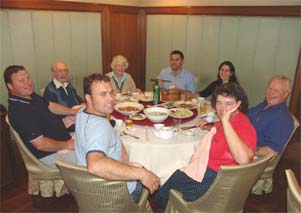

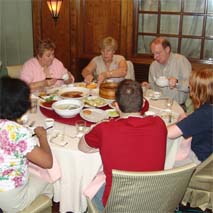
Sunday 9 May
We all left together for Shanghai airport for our flights to Hong Kong and London. On the way we saw the high-speed train (Maglef?) linking Shanghai to Pu Dong airport. Again check-in was very efficient and the 6 of us flying to Hong Kong said our goodbyes and departed for the rest of our holiday.
